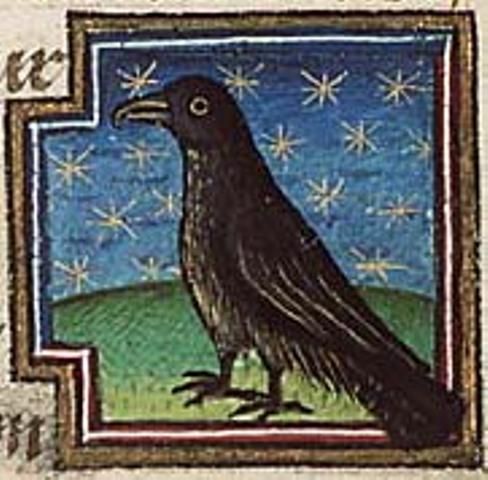















An Cathach
The Battler: The Psalter of Saint Columba
RIA MS.12R33
Manuscript on vellum, written between 560 and 630, making it the oldest Irish manuscript in existence, and containing the earliest examples of Old Irish language.
It is a psalter, containing the Vulgate Psalms from XXX to CV, with an Irish rubric at each heading. What makes it interesting, is that its creation is attributed--though this is not proven--to Saint Columba (Irish: Columcille, "dove of the Church"), and it sparked the first "copyright infringement" case.
It is said that Columba borrowed the psalter of Saint Finnian, and made a copy of it, down to the last detail. Finnian had brought the first copy of the Vulgate Psalms to Ireland, and rather jealously guarded his book. Columba, naturally, wanted his own copy, and borrowed the book, claiming only wanting to read it. On the discovery of the copy, Columba claimed that it was made from a miraculous light, but Finnian brought the matter to King Diarmait Mac Cerbhaill, who, upon examining the original psalter and its clone, proclaimed, "To every cow belongs her calf, therefore to every book belongs its copy. Therefore the copy you made, O Colum Cille, belongs to Finnian." (Ah, but isn't there a case here for fair use?)
The book was taken from Saint Columba, and it ended up in the hands of O'Donnell clan after the battle of Cul Dremhne in 561 (hense the dating of 560 for the composition, provided this is Columba's psalter). This battle--in which Columba, a prince of the Uí Niall clan (one of the ruling families of Ireland), got his very powerful family to rise up against the king--is one of the reasons for Columba's exile from Ireland, which thus encouraged his missionary work in Scotland and on Iona. (Columba also earned the enmity of the king when the saint offered sanctuary to a Prince Curnan, who was then dragged out of the church by Diarmait.)
The psalter then stayed in the hands of the O'Donnells, who made it a special case. It became a talisman, and earned its name "The Battler" due to the thrice-deosil carrying of the book around a battlefield as a good luck charm. It ended up in France in the seventeenth century, but was brought back to Ireland in the eighteenth, and donated to the Royal Irish Academy in the nineteenth.
Legend aside, it is dated to the late sixth/early seventh century based on the language and orthography of the manuscript, which was written by one scribe.
SOURCES
"An Cathach". The Royal Irish Academy.

Back to "C" | Back to JCE
Home
Mary Jones © 2004